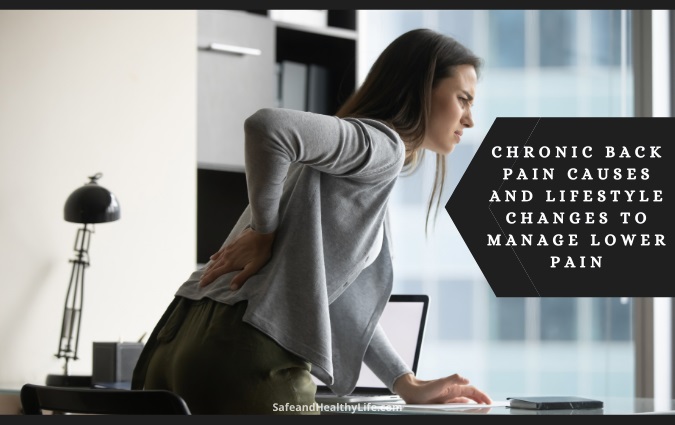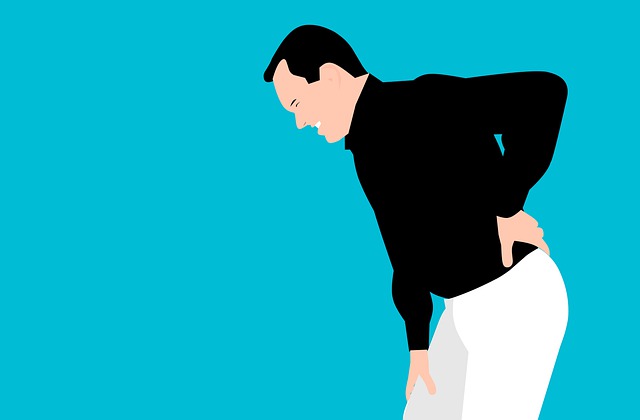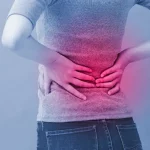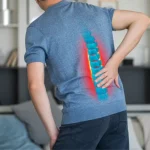
Back pain is a common problem today. However, back pain is not a disease but a symptom due to disruption or injury of back structures in the body. This can be caused by trauma to bones or disturbances to nerves.
Although back pain is common among the elderly, experts are quick to point out that most of us will experience back pain at some point in our lives.
Back pain can be caused by a lot of different factors. However, physical factors include; lifting heavy loads, work-related posture, sudden back movements, bending and twisting, etc.
Sometimes, back pain presents as sharp and constant or dull but present. It may be palpable during exercise or with prolonged sitting or while standing or walking. Back pain can be acute and persistent.
While some people experience back pain that relieves within a few days, most back pain presents as chronic pain.
Chronic back pain is pain that persists long after the injury has healed. Unlike acute pain, chronic pain is persistent; comes and goes. And may last for weeks, months, even years.
Chronic back pain is an unpleasant problem that reduces life quality and causes immense discomfort. In some cases, chronic back pain can lead to psychological issues such as depression and intense stress.
Here are the main common causes of chronic back pain.
Main causes of back pain

Photo Credit: Pixabay
1. Sprains and strains
A sprain or strain is an injury to soft tissues – ligaments, muscles, and tendons. Sprains and strains are especially common with the soft tissues of the lower back.
You can sprain or strain their backs when exerting excessive physical demands on the back muscle. By stretching the back muscles beyond their limit, you cause injury to the soft tissues.
Mechanical actions that may lead to back pain include:
- Improper weight lifting form
- Repetitive movements involving the back
- Twisting and curving the lower back
Chronic back pain caused by sprains and strains go from moderate to severe and may cause temporary disabling.
2. Herniated discs
The vertebrae are connected to form the spine. Each adjacent vertebrae is cushioned by a disc. Each disc forms a fibrocartilaginous disc. This adhesion holds the vertebrae together. It allows slight movement of your vertebrae and acts as a shock absorber.
Discs herniation occurs when there is a tear or rupture in the annulus of the intervertebral disc. Fragments of the disc nucleus are pushed out of the ruptured annulus, leading to pressure on the spinal nerves which causes pain and discomfort for a person.
Although the pain may be severe and unbearable, most patients recover a few weeks after non-surgical treatment.
Disc herniation is usually an early stage of degeneration. It is commonly known as a bulging, protruding, or ruptured disk. Disc herniation occurs anywhere along the length of the spine, though it commonly occurs in the lower back.
3. Spinal Stenosis
Spinal stenosis occurs when bony openings on the vertebrae such as spinous foramen and canal abnormally narrow leading to pressure on the spinal cord and nerves.
Depending on the location and the speed of the narrowing, pressure on the nerve causes intense pain, numbness, and weakness in the arms and legs.
People suffering from Rheumatoid arthritis, osteoarthritis, scoliosis, spinal tumors, and other forms of genetic disorders and degenerative disc diseases are most likely to experience pain caused by spinal stenosis.
Spinal stenosis usually developed over time. The pain, as described by many patients, comes and goes – not continuous. Pain occurs unexpectedly during activities like walking or when riding a bike. And it can be relieved by resting – sitting or lying down.
4. Sciatica
Sciatica, according to Harvard, is a common and misunderstood cause of pain. However, sciatica is often described as pain that radiates one leg and into the foot.
The root cause of sciatica is a slipped disc. Specifically, pain in the region of the lumbar area.
This leads to the pain of the sciatic nerve. Sciatica may be caused by herniated disc as well as spinal stenosis.
Other causes of chronic back pain include:
1. Congenital anomalies of the back
- Lordosis: An abnormal inward arching of the lower back (lumbar and sacral regions)
- Scoliosis: An S-shaped curvature of the spine.
- Kyphosis: An outward curvature in the thoracic and sacral regions.
2. Degenerative diseases
- Spondylosis: The is an age-related degeneration of the spine. It is the wear and tear of the structures of the spine – joints, bones, disc, etc.
- Arthritis and other inflammatory diseases: Rheumatoid arthritis, Osteoarthritis, are conditions that lead to the inflammation of the spine.
Lifestyle changes for managing chronic back pain

Photo Credit: Pexels
Pain is subjective. Pain that is unbearable for one person may be normal for another person. This makes diagnosing and managing pain difficult.
However, according to pain management experts, chronic back pain from nerve disruption(nerve pain) or trauma and surgery can be managed with few lifestyle changes.
Here are a few positive lifestyle changes that can help manage chronic back pain;
1. Getting enough sleep and rest: Adequate sleep and rest can help manage chronic pain. When managing pain, it’s important to get at least 7-8 hours of sleep. Proper sleep and rest give the body enough time to heal and boost energy heals.
2. Eat well and maintain a healthy diet: A healthy diet can help the body heal and manage pain. A balanced diet also helps in fast recovery after surgical operation.
3. Exercise and maintain an active lifestyle: There is a myriad of reasons to exercise – improving your moods, keep your bones strong, balancing your heart rate, etc. Low-intensity exercises such as walking, biking, and stretching can help manage pain. Also, trauma and mechanical injury can be prevented by leading an active lifestyle.
4. Reduce stress: Stress is a big factor in chronic pain. This is because pain and stress go hand in hand. Make a conscious effort to identify stress triggers and situations in your life. You can also practice relaxation techniques such as breathing, meditation, and mindfulness practices to help mitigate stress in your life.
Finally, effectively managing pain means that your doctor implements treatment plans to provide complete back pain relief. This includes lifestyle changes, physical therapy, alternative and modern medical practices, and in extreme cases of pain, surgical procedures to correct the underlying problems relating to your back pain.
Conclusion
Back pain reduces life quality. Many people suffering from chronic back pain spend millions seeking relief from their pain.
Treating may be frustrating but not impossible. The majority of back pain cases are resolved without any medical intervention.
Nevertheless, having an understanding of what causes chronic back pain equips you to take better care of your back by adjusting your lifestyle and leading a healthier lifestyle.
About The Author:
Dr. Jonathan Chin is the founder of Excelsior Pain Management, an Austin, Texas-based pain management clinic. Dr. Chin graduated with high honors from the University of Texas at Austin and later graduated from medical school at the University of Texas Southwestern Medical Center at Dallas. Dr. Chin was selected among thousands of applicants to complete a Pain Fellowship at the prestigious Harvard Medical School’s Brigham and Women’s Hospital, a program that is ranked the #1 Pain Fellowship program in the country by both the American Pain Society and the American Academy of Pain Medicine.




